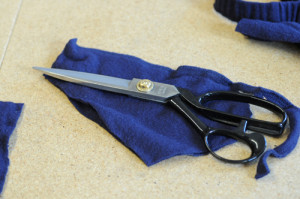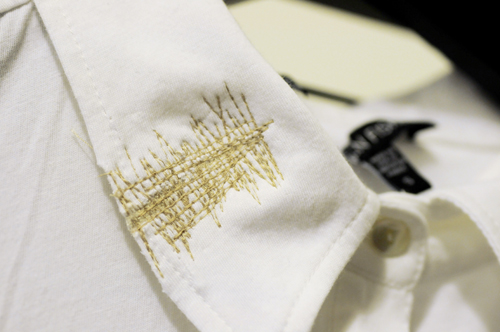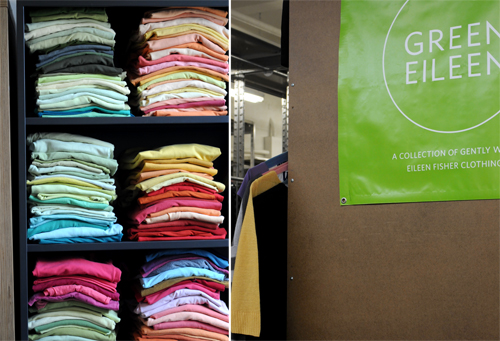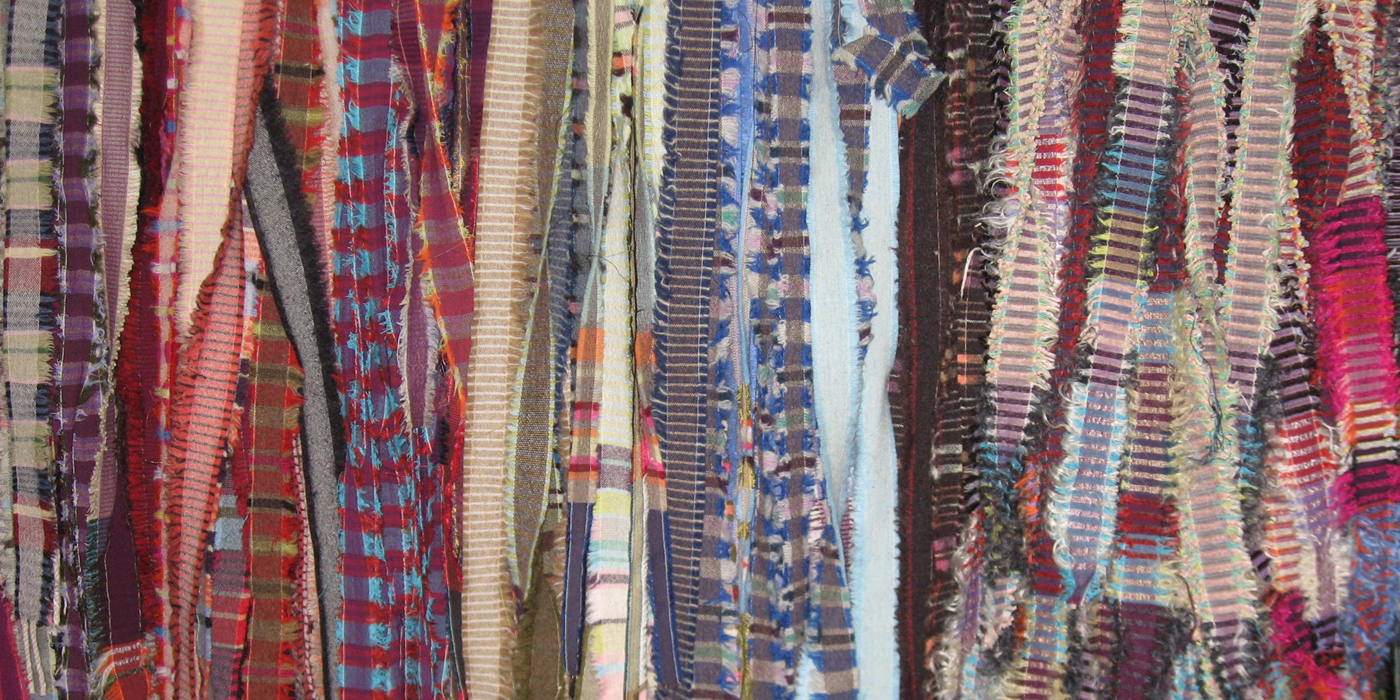
Green Eileen Lab (Image: Magali An Berthon, 2016)
Reduce, recycle, and reuse are the three words to live by when thinking of how to limit waste generation and the human footprint on the environment. While most textile materials are nearly 100% recyclable, approximately 25% of used clothing and textiles in the United States end up in landfills where they release toxic chemicals and can take centuries to break down completely. In its 2013 report, the U.S. EPA (Environmental Protection Agency) estimates that textile waste occupies nearly 6% of all landfill space. Americans alone generate 15 million tons of textile waste annually, and 12.8 million tons of this waste (pre-consumer and post-consumer combined) are sent to landfills. [1] Municipal solid waste is a major concern for public services. The goal of the NYC Department of Sanitation is to be contributing zero waste to landfills by 2030. Every year New Yorkers discard about 200,000 tons of clothing, textiles, and accessories. To facilitate clothing donation, the Department of Sanitation has implemented Re-fashioNYC, a charitable program in collaboration with the non-profit organization Housing Works.
Re-fashioNYC facilitates the process by installing cost-free drop-off spots in over 30,000 apartments across the city, available to apartment buildings of 10 units minimum and corporate buildings. Collected items are then sorted out at the Housing Works warehouse in Queens and sold at the Housing Works thrift shops. All proceeds from this operation are used by the organization to support their homeless and AIDS programs. Re-fashioNYC and Housing Works both embody the spirit of the 3 R’s at its best.
REDUCE
Long before recycling, reducing consumption is the first and best option to stop creating waste. Consumers should prioritize reasonable consumption habits, remembering that all the unwanted items sent to the trash originally took a lot of energy to make. Fashion does not have to be disposable. What if we select durable products that will last longer? What if we could buy high-quality pieces less frequently and be creative with the wardrobe we already have? Extending the life of our garments is an exciting challenge. By learning how to keep them in good condition and mend when needed, consumers can find new uses for their clothes and avoid consuming new resources. A dress can be re-purposed into a skirt, cut into scraps to make patchwork or to give a shirt an artisanal twist.

Creative repair and visible mending by CFDA/Eileen Fisher Social Innovators (Image: Magali An Berthon, 2016)
REUSE
What if we choose second-hand clothing instead of buying a brand new pair of pants? An inventive and successful response to a shopping-spree indulgence is the swap trend that is becoming increasingly popular among fashion aficionados, especially in the UK. During last year’s Fashion Revolution week, a handful of influential vloggers such as CutiePieMarzia encouraged their followers to play with fashion by swapping their outfits under the hashtag #haulternative. Swapping auction events are also fun parties that raise collective awareness of alternatives to fast fashion. There is also a growing market for sustainable fashion brands that offer affordable and attractive garments made of recycled fabrics. Rather than heading to the landfill, unwanted clothes can be donated to a variety of specialized organizations. Drop-off centers, thrift stores, and community-based organizations such as Wearable Collections in New York City will collect, separate the garments by quality and color, and dispatch them to second-hand markets and recycling companies. Fashion retailers have also started to address this problem. In 2009, the American company Eileen Fisher launched Green Eileen to collect used Eileen Fisher garments from its customers, clean, repair, and resell them to raise funds for non-profit programs serving young women.

Green Eileen Lab (Image: Magali An Berthon, 2016)
RECYCLE
Recycling is often seen as the only waste management strategy available, which indeed saves more energy than the production of virgin fibers and new items. It includes a variety of energy-intensive processes such as shredding discarded fabrics to extract raw materials, and spinning reclaimed fibers into new yarn. Fibers extracted from unmarketable textile waste are converted into low-end materials such as stuffing, automotive components, and low-end blankets.
However recycling does not tackle the root issue of over-consumption. Making clothing and recycling them requires a huge amount of resources. For example, it takes up to 1,500 gallons of water to make one pair of jeans and it creates approximately 32 kilograms of CO2 emission. Alternative closed-loop strategies that include a zero-waste system from the start must be considered to bring a fundamental change in the textile and clothing production environmental cost.
[1] U.S EPA, Advancing Sustainable Materials Management: Facts and Figures 2013, 2015, 7, accessed August 2016. https://www.epa.gov/sites/production/files/2015-09/documents/2013_advncng_smm_rpt.pdf
About the Author
Magali An Berthon is a textile researcher and designer, focusing in particular on world textile crafts and sustainable fashion. After an MFA in textile design in Paris, she studied textile history at the Fashion Institute of Technology NY on a Fulbright fellowship in 2014. Since June 2015, she is a curatorial fellow at the Textile Department at Cooper Hewitt, Smithsonian Design Museum.
Scraps Stories
This post is part of the blog series Scraps Stories dedicated to exploring sustainable textiles and fashion, in relation to the exhibition Scraps: Fashion, Textiles, and Creative Reuse.
Scraps: Fashion, Textiles, and Creative Reuse is made possible by the generous support of 

2 thoughts on “Reduce, Reuse, Recycle: How to Minimize Waste”
Linda Friedman Schmidt on October 4, 2016 at 10:08 pm
Discarded clothing is my paint. Since 1998 I have been breathing new life into used clothing, transforming it into narrative textile portraits that are exhibited with contemporary fine art.
http://www.lindafriedmanschmidt.com
Magali An Berthon on October 5, 2016 at 7:03 am
Thank you for sharing your work Linda, it’s an interesting combination of art and craft. I hope you will get the chance to visit the show, if you are in the NY area.